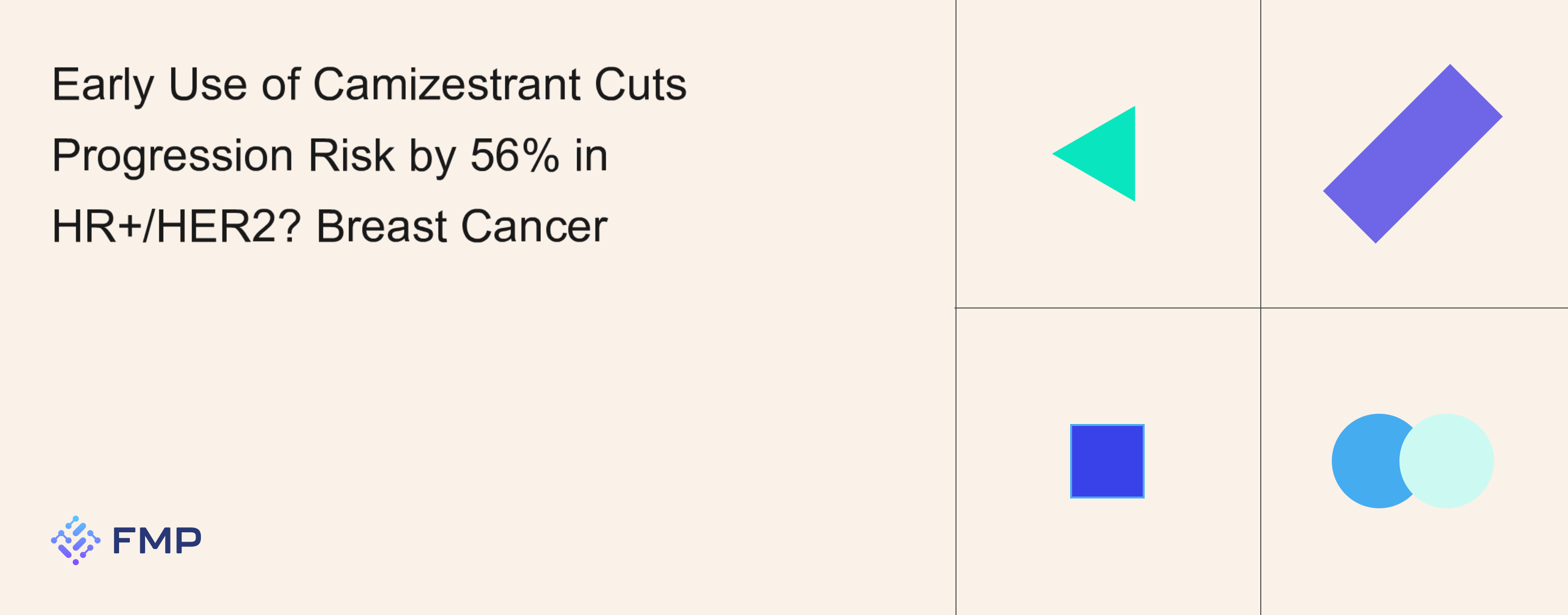
Treating women with hormone receptor–positive, HER2-negative breast cancer using AstraZeneca’s (NASDAQ: AZN) experimental oral selective estrogen receptor degrader (SERD) camizestrant at the first sign of resistance to standard therapies halved the risk of disease progression or death. Presented at ASCO 2025, this landmark trial employed a liquid biopsy to guide therapy changes before tumor growth was visible on scans.
Trial Design and Patient Population
Patient cohort: 3,256 women with advanced HR+/HER2– breast cancer
Prior therapy: ≥6 months on aromatase inhibitors plus a CDK4/6 inhibitor (e.g., Novartis’s Kisqali, Pfizer’s Ibrance, Eli Lilly’s Verzenio)
Randomization:
Early switch to camizestrant upon detecting ESR1 mutations in circulating tumor DNA (ctDNA)
Continue standard endocrine ± CDK4/6 inhibitor until radiographic progression
Liquid Biopsy–Guided Intervention
What is a liquid biopsy? A blood test detecting tumor-derived mutations (e.g., ESR1) enabling oncologists to identify resistance prior to scan-detectable progression.
Rationale: By the time imaging shows progression, the tumor has often acquired multiple resistance mechanisms; earlier intervention can “stay ahead of the curve.” (Dr. Eleonora Teplinsky, ASCO expert).
Key Efficacy Results
Primary endpoint: Progression-free survival (PFS) or death
Outcome: 56% reduction in risk of progression or death (HR = 0.44) for the early-switch arm versus standard care.
Median PFS:
Early-switch (camizestrant): Not yet reached at interim analysis
Control arm: ~8.3 months (post–cdrK4/6 inhibitor progression)
Dr. Teplinsky emphasized, “When patients progress on scans, we’re already behind. An early switch allows doctors to essentially stay ahead of the curve.”
Implications for Clinical Practice
Paradigm Shift:
If approved, camizestrant could become the first SERD backed by liquid-biopsy guidance, initiating therapy changes before radiographic progression.
Similar strategies may apply to other targeted agents as ctDNA assays gain regulatory and payer support.
Patient Selection:
ESR1 mutations on ctDNA trigger the switch.
Prospective monitoring with periodic liquid biopsies (e.g., every 8–12 weeks) becomes standard in post–CDK4/6 settings.
Treatment Sequencing:
Following aromatase inhibitor + CDK4/6 inhibitor, early camizestrant may delay progression compared to waiting for imaging-confirmed resistance.
Subsequent lines could include PI3K or mTOR inhibitors, based on evolving mutation profiles.
Camizestrant’s Position in AZN’s Oncology Portfolio
AstraZeneca’s oncology franchise is undergoing rapid expansion. To gauge how critical camizestrant could be to AZN’s growth trajectory—and to see how much revenue streams currently derive from breast cancer drugs—investors can review segment revenues via the Revenue Product Segmentation API, which breaks down AZN’s sales by product class, including targeted oncology therapies.
Financial and Credit Context
AZN’s balance sheet: Strong cash generation and investment capacity support late-stage R&D spend.
Credit profile: Given AstraZeneca’s robust pipeline and diversified revenue base, AZN maintains an investment-grade rating. Track real-time updates on AstraZeneca’s credit metrics via the Company Rating API to see how pipeline successes translate into credit stability.
Broader Impact on HR+/HER2– Treatment Landscape
Liquid Biopsy Adoption: Widespread use may expand beyond ESR1 monitoring to include PIK3CA and other actionable mutations.
SERD Competition: Other oral SERDs (e.g., elacestrant) are also under evaluation; camizestrant’s early-switch data give it a potential edge.
Payor Considerations: Demonstrating PFS benefit without waiting for radiographic progression could justify earlier reimbursement—shaping guidelines and insurance coverage.

